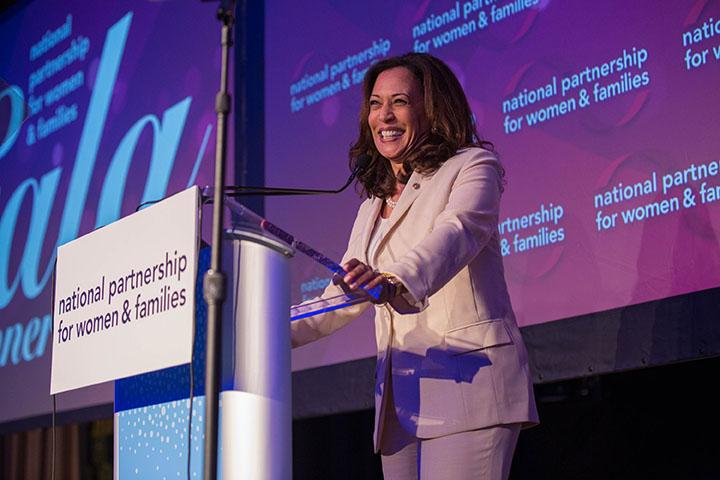New Mexico Supreme Court Ruling Strikes Down Local Abortion Restrictions
NBC News, January 9, 2025
The New Mexico Supreme Court on Thursday struck down abortion restrictions by conservative cities and counties at the request of the state attorney general. The unanimous opinion reinforces the state’s position as having some of the most liberal abortion laws in the country. The ruling preserves access to abortion procedures across a state that has become a major destination for people from other states with bans. Attorneys representing New Mexico’s Lea and Roosevelt counties and the cities of Hobbs and Clovis had argued in court that local abortion ordinances can’t be struck down under provisions within the “anti-vice” law known as the Comstock Act. Writing for the majority opinion, Justice C. Shannon Bacon said that state law precludes cities and counties from restricting abortion or regulating abortion clinics.
These States Already Restrict Abortion. Their Legislatures Could Push It Even Further
The 19th, January 15, 2025
Lawmakers are prepared to press for more abortion restrictions this year, regardless of any action President-elect Donald Trump pursues in office. Many of the bills filed in state legislatures across the country focus on abortion pills, abortion access for minors and, in at least one state, how to undo protections for the procedure. Legislators in Indiana, Missouri, Oklahoma, South Carolina, Texas and Tennessee have filed bills that would further curb access. In states with near-total bans, lawmakers are looking to eliminate the workarounds residents have used to continue accessing abortions. In others, lawmakers will weigh whether to move from six-week abortion bans to almost completely outlawing the procedure. And in Missouri, where voters just amended the constitution to enshrine abortion rights, some legislators are pushing to reverse or weaken the new democratically established protection. Because state legislatures often influence each other, more bills are almost certain to follow, as more sessions kick off this week.
Abortion Bans Seem To Be Driving Young People To Move Out of State
The 19th, January 9, 2025
Tens of thousands of young people – single people, in particular – have left states with near-total abortion bans. A new paper by the National Bureau of Economic Research, a nonprofit economic research organization, estimated population changes by analyzing address-change data collected by the United States Postal Service. It found that since the 2022 fall of Roe v. Wade, the states with near-total abortion bans – 13 at the time of the analysis – appear to have lost 36,000 people per quarter. Single-person households, which typically skew younger, were more likely to move out of states with bans. Prior to Roe’s overturn, states that would eventually ban abortion were actually losing fewer residents than states that would continue to protect it, a gap that grew during the COVID-19 pandemic. Though the difference began to narrow in 2021, it wasn’t until Roe fell – and states began to enforce abortion bans – that people started leaving anti-abortion states in larger numbers. If the measured impact of abortion bans continues over another five years, the researchers found, it would have the same effect on migration as a 10 percent increase in crime. The data also suggested that states with perceived “abortion-hostile” policies – a term the researchers used to classify states that had enacted bans that were blocked by courts, such as Ohio and Utah; those with strict bans, such as Florida and Georgia, which have six-week bans, and Arizona, which had a 15-week ban; and Pennsylvania, which is listed as hostile by the Center for Reproductive Rights, a legal advocacy organization – also saw a population loss. The loss of young people has particular implications for a state’s economic trajectory.
Texas Eyes Abortion Pills as ‘Controlled’?
POLITICO, January 10, 2025
When the Texas Legislature begins its session Tuesday, lawmakers will consider measures to further limit access to abortion pills – including one mirroring a new law in neighboring Louisiana deeming the medications controlled substances. Three lawmakers have prefiled bills that would make mifepristone and misoprostol – the two drugs prescribed for medication abortions in the U.S. – Schedule IV controlled substances. States may set drug penalties that differ from the federal system, applying looser or stricter punishments depending on their priorities and resources. Reproductive rights advocates say such a move would erect more barriers for pregnant patients who need the drugs for miscarriage management and emergency treatment in states that already boast the country’s most restrictive abortion bans. Health care providers must follow certain recordkeeping and storage requirements for controlled substances “even in the hospital setting,” said Anna Legreid Dopp, senior director of government relations at the American Society of Health-System Pharmacists. Locking the drugs away from a unit can delay their use in emergencies, she said. Pharmacists must enter prescription and patient information into a monitoring system as they do for opioids, a requirement that could make some reluctant to dispense the drugs due to the information’s accessibility to law enforcement and other providers.
Voters Backed Abortion Rights, but the State Judges They Elected Might Not
CBS News, January 14, 2025
In November, Montana voters safeguarded the right to abortion in the state’s constitution. They also elected a new chief justice to the Montana Supreme Court who was endorsed by anti-abortion advocates. That seeming contradiction is slated to come to a head this year. People on polar sides of the abortion debate are preparing to fight over how far the protection for abortion extends, and the final say will likely come from the seven-person state Supreme Court. With the arrival of new Chief Justice Cory Swanson, who ran as a judicial conservative for the nonpartisan seat and was sworn in Jan. 6, the court now leans more conservative than before the election. A similar dynamic is at play elsewhere. Abortion rights supporters prevailed on ballot measures in seven of the 10 states where abortion was up for a vote in November. But even with new voter-approved constitutional protections, courts will have to untangle a web of existing state laws on abortion and square them with any new ones legislators approve. The new makeup of supreme courts in several states indicates that the results of the legal fights to come aren’t clear-cut. Activists have been working to reshape high courts, which in recent years have become the final arbiters of a patchwork of laws regulating abortions. That’s because the 2022 U.S. Supreme Court’s decision in Dobbs v. Jackson Women’s Health Organization overturned federal abortion protections, leaving rulemaking to the states.
ICYMI: In Case You Missed It
Today, @GovMurphy announced New Jersey will begin providing 12 weeks fully paid parental leave to state employees! #PaidLeave not only improves maternal health outcomes, it also boosts economic outcomes for bother individuals and employers. Congratulations New Jerseyans! https://t.co/IgkVS8dhUY
— National Partnership (@NPWF) January 14, 2025
We respect your privacy. Read our policy.
Note: The information contained in this publication reflects media coverage of women’s health issues and does not necessarily reflect the views of the National Partnership for Women & Families.



